- Home |
- Why With Us |
- About Us |
- Booking |
- Contact Us |
- Site Map
- Home
-
Nepal
-
Trekking
- Arun Valley with Gokyo Lakes
- Everest Base Camp Trek
- Everest- A Living Culture Exploration
- Everest Explore
- Everest Base Camp (via Thame) Trek
- Everest Base Camp with Kala Patthar
- Everest Comfort Trek
- Everest High Passes with Ama Dablam Base Camp
- Everest Mani Rimdu Festival Trek
- Everest Nagpa La Trek
- Everest with three high passes
- Gokyo Ri, Chola Pass & Chukung Ri with Kala Patthar
- Gokyo with Everest Base Camp
- Jomsom - Muktinath
- Jomsom - Muktinath
- Khayar Lake Trek
- Manaslu and Tsum Valley with Larkya La
- Upper Mustang Trek
- Manaslu High Circuit
- Manaslu, Tilicho Pass & Upper Mustang
- Annapurna Base Camp Trek
- The Annapurna Circuit Trek
- Annapurna Panorama
- Nar and Phu Valley Trekking
- Nepal Rhododendron Trek
- Royal Trek
- Saribung Trek and Expedition
- Annapurna Sanctuary Trek
- The Annapurna Sunrise Trek
- Expedition
-
Rafting
-
Peak Climbing
-
Tours
- Kathmandu-Chitwan-Jungle Tour with visit to Pokhara
- Dawn to Dusk Tour
- Historical, Natural & Cultural Tour with Camping
- Kathmandu Valley Temple Tour
- Temple - Panorama - Jungle Tour
- Taste of Nepal
- Central Nepal Tour
- Explore Nepal Tour & Trek
- Nepal Cross-country Tour
- Best of Nepal Tour & Treks
- Kathmandu valley rim Tour & Treks
- Nepal Culture Tour
- Introduction to Nepal Tour & Treks
- Nepal at a glance Tour & Treks
- Wonders of Nepal Tour & Treks
- Glimpses of Nepal Tour & Treks
- Through the Silhouette Tour & Treks
- Tent and Temple Tour
- Kathmandu-Chitwan-Pokhara Tour
- Historical, Cultural City and Jungle Tour
- Nepal Wildlife Tour
- Nepal Panorama Historical Tour
- Nepal Adventure Tour
- Nepal Pilgrimage Tour
- Ghalegaun-Ghanapokhara Homestay Tour
- Jungle Safari
- Adventure Sports
-
Trekking
- Tibet
-
Bhutan
-
India
- Yoga Tour
- About Us
-
The Great Himalayan Trail
-
Short Tours/Treks


Hatia and Topegola Trek in the Upper Arun
27 days (ktm-ktm) Days from
Lhomis of Hatia region are different from the Tibetan to the North and other adjoining areas, such as Olangchunggola and Topkegola. Answers to some of the question about the ethnicity of Lhomis raised by Haimendorf can be found in the book written by Mr.Singh. Kirati are the original inhabitants of Nepal. Dr. Baburam Acharya, the prominent Nepalese historian writes that they settled in the west, central and east Nepal in around 2nd century B.C. It has been established that Magar, Gurung in the west, Tamang in the central, Rai, Limbu and Lepcha in the east, and Tharu and other aboriginal ethnic groups in the southern plain are the descendents of the Mongol and Kirant cultural mix though in the present time only Rai and Limbu are defined as Kiranti.
| Max. Elevation : 4780m | Grade : Moderate |
| Best season : Sept- May | Type of trek : Camping |
| Duration : 27 Days | Starting point : Tumlingtar |
| Ending point : Tumlingtar | Highlights : Culture/Nature |
Lhomis of Hatia region are different from the Tibetan to the North and other adjoining areas, such as Olangchunggola and Topkegola. Answers to some of the question about the ethnicity of Lhomis raised by Haimendorf can be found in the book written by Mr.Singh. Kirati are the original inhabitants of Nepal. Dr. Baburam Acharya, the prominent Nepalese historian writes that they settled in the west, central and east Nepal in around 2nd century B.C. It has been established that Magar, Gurung in the west, Tamang in the central, Rai, Limbu and Lepcha in the east, and Tharu and other aboriginal ethnic groups in the southern plain are the descendents of the Mongol and Kirant cultural mix though in the present time only Rai and Limbu are defined as Kiranti. At the time when Tibetan king Srong-Tsen Gampo was in the height of his power a warior names Mao Rong Hang who came from Assam established his presence in Morang now known as Biratnagar. In his effort to expend his kingdom to the north he was defeated by Kiranti chiefs and he fled to Tibet probably using the route through Hatia and Kimathanka. In Tibet he established himself as head of Kampa Dzong at the behest of the Tibetan king; later he returned to the south and defeated Kiranti king with the help of Tibetans. For this mission he descended through Hatia, Topkegola and Olangchunggola.
All this happened in 7th century A.D. By 849 to 880 A.D. successive chief left their own imprint throughout east and west of Arun River. During the end of the same period a Limbu chief Shrijunga Hang (880-935 AD) said to have built fort at Chainpur and introduced Limbu script known to be one of the oldest written document, Continued migration from east to west, south to north and vice versa in the process of struggle for domination until 18th century explains unique culture of Lhomi of Hatia and other ethnic group in upper Arun River.
Late Dr.Harka Gurung, a prominent geographer explains all this in his best seller “Vignettes of Nepal.” Among the very few who visited the region are C.J. Morris and L.R.Wager. Morris wrote "The George of Arun" and Wager wrote the book “The Arun River Pattern and the Rhine of the Himalaya” in the geographic journal.
Trek starts at Tumlingtar and follows Arun-river towards north to Num and travel northeast to the source of Arun River, which is located beyond the old trading post of Kimathanka. The trek visits the isolated villages of Hatia, Chepuwa, Ritak and Thudam near the Tibetan border of north east Nepal. From Thudam we travel south to Topkegola. It is another village that shares the history of upper Tamur. From Topkegola, instead of taking lower trail through Mewa Khola (river) to Donje, Phapung and Lingtep the proposed trail climbs up to the ridge of Jaljala Himal (4800m) and continues the snow traverse through the high mountain trail to Milke Danda and descend to Chainpur. The traverse involve about 4 days of travel through snow and average 4700-meter elevation. Depending upon the weather and physical condition of the trekkers there is the option taking a higher trail to Milke Danda. From Milke danda it is also possible to descend to Basantapur and catch a bus to Biratnagar. Milke Danda is famous for unique rhododendron forest. The Milke danda-Jaljala trail is one of the most spectacular anywhere. The panoramic view of four of the five tallest mountain peaks can only be seen from this trail. The long spiny mountain stretches from north to south over 25 miles. Jaljala himal has the lowest elevation in the Himalaya range.
"The trek visits the Lhomi villages near Tibetan border where Arun breaches the high Himalaya massif."
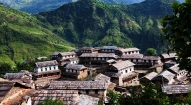
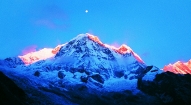
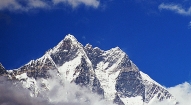
Day 1: Arrive Kathmandu, transfer to hotel, in Kathmandu
Day 2: In Kathmandu, free day to explore Kathmandu and official work
Day 3: Fly Kathmandu to Tumlingtar, 500m/800 ft and trek to Khandbari
Day 4: Bhotebas (1720m)
Day 5: Num
Day 6: Lamobagar (Arun Khola)
Day 7: Hatia (2480m)
Day 8: Chepuwa (3000m)
Day 9: Ritak
Day 10: Explore the valley to Kimathanka (4000m)
Day 11: Ritak (4000m)
Day 12: Thudam.
Day 13: High camp at Yala
Day 14: Cross Thangla Bhanjyang (4286m)
Day 15: Descend to Topkegola
Day 16: Extra day
Day 17: Ascend the ridge to Panchpokhari
Day 18: Traverse through the ridge of Jaljala Himal (4785m)
Day 19: Traverse though the ridge of Jaljala Himal (4780m)
Day 20: Extra day
Day 21: Milke Danda (ridge) –3600m
Day 22: Mayam (1800m)
Day 23: Chainpur (1200m)
Day 24: Rest day in Chainpur.
Day 25: Tumlingtar
Day 26: Fly to Kathmandu, transfer to hotel, overnight in Kathmandu
Day 27: Transfe to airport, depart Kathmandu.
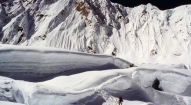
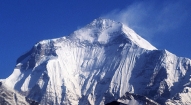
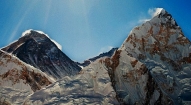
- All ground transfer by private vehicles as per our itinerary
- Fine hotel –Thamel Eco Resort in Kathmandu (twin sharing including b/f and taxes)
- Welcome dinner with live Nepalese cultural program hosted by Makalu Adventure
- Guided sightseeing around Kathmandu world heritage sites including all entrance fees
- All domestic airfares (Kathmandu-Tumlingtar- Kathmandu)
- Organized camping trek arrangements including all high quality German Salewa / UK Super Quasar camping equipment such as two men tent, kitchen tent, dining tent, toilet tent, tables, chairs, mattresses, hot water bags, pillows, inner sheets etc.
- Everyday three times hot meals while on trekking prepared by our professional kitchen crew.
- National park, conservation area permit and fees wherever applicable
- Guide, porters, their daily wages, insurances with all necessary lodging / fooding arrangements.
- Administration service during rescue and evacuation (if required)
- Down jacket, sleeping bags, Trekking kit bag/duffel bag, trekking map and trekking Poles
- A comprehensive medical kit
- All government and local taxes
- Nepal visa fee.
- Airport taxes.
- International airfare to and from Kathmandu.
- Excess baggage charges.
- Lunch and evening meals in Kathmandu.
- Extra night accommodation.
- Travel and rescue insurance.
- Personal expenses (phone calls, laundry, bar bills, battery recharge, extra porters, bottle or boiled water, showers etc).
- Rescue and evacuation if required.
- Tips and gratitude



Trekking in Nepal
Expeditions In Nepal
Rafting in Nepal
Tours in Nepal
All rights reserved.


